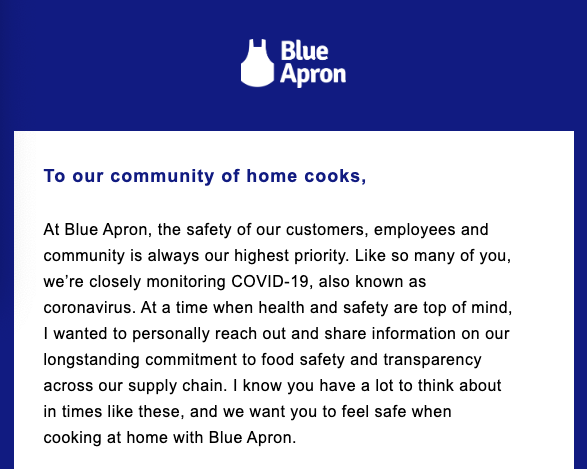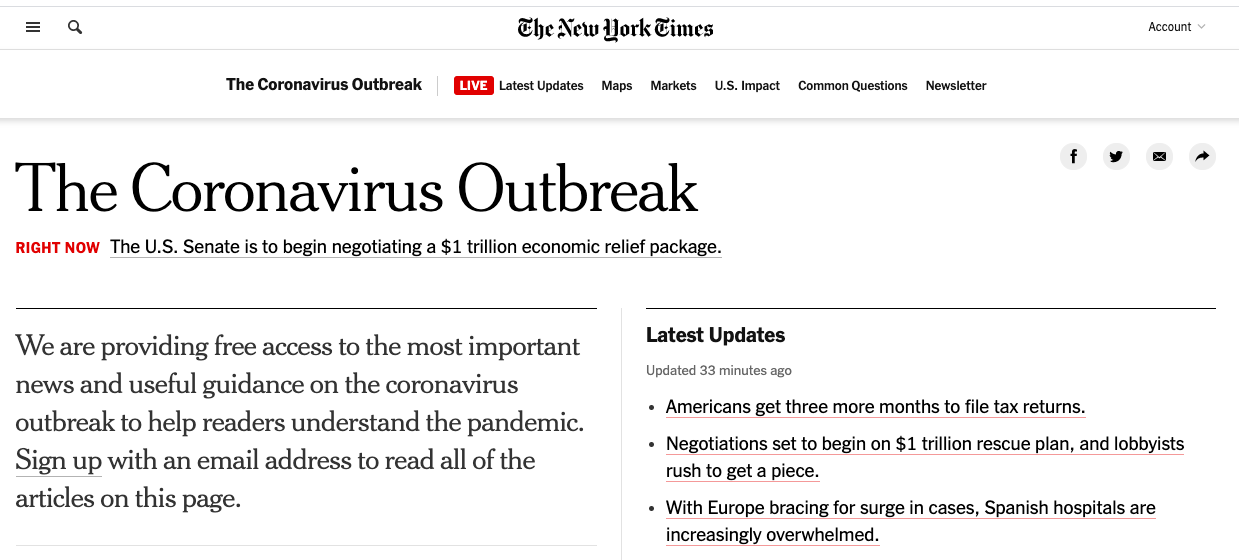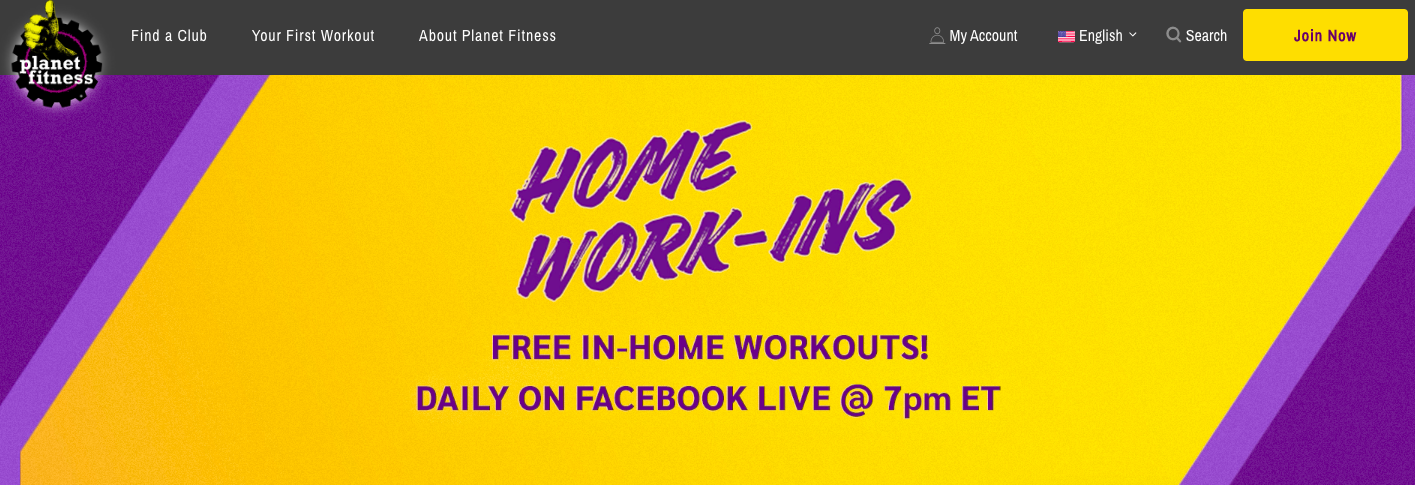The past few weeks have been an unprecedented time in recent history. COVID-19 has brought uncertainty in all areas of our lives and the economic downturn has led to layoffs, salary reductions, and budget freezes for many businesses.
Marketers across the country are learning to adapt to this new business climate by resetting scuttled marketing plans and budgets, and shifting how we talk to our customers online. It will be critical to redefine how your organization interacts with its audience to avoid pitfalls of perceived insensitivity or myopia, and find new ways to increase efficiency and effectiveness in online marketing.
As we try to navigate these uncharted waters know this: we are all in the same boat. No one has a secret COVID-19 messaging playbook. What we do have is tried-and-true crisis communication strategies. Using best practices in this Coronavirus era can help your company move forward and get you in a better position for when business does return to normal.
So let’s get through this together by making a plan, which is always the first step for good marketers, anyway, right?
1. Define how you will interact with your audience and what they need from you
The Coronavirus crisis in the United States could last for months and you will need to evolve your approach to marketing and how you communicate to your customers or constituents as it goes on. Your first step is to understand and document what your audience, customers, or constituents need or want, and how your organization can help them.
Is your company stepping in to provide news updates, or investing advice? Are you modifying how you do business to move transactions online? What do your customers need to know about changes to your business or industry that your organization is uniquely qualified to comment and to lead on? You’ll want to literally document who your audience is, what they need in these times, and how you can help.
2. Assign a point person & create a list of approved messages
Whether communicating to the news media, clients, or posting to social media, you should define who is the voice of the company. Some organizations may require separate teams or individuals for internal and external communication. Just be clear who those people are and what their responsibilities will be during this crisis.
Decide what needs to be said now and make sure all stakeholders within the organization are in agreement. Whatever is being shared externally should also be shared internally, so all employees know what the company is saying to customers and clients, even if they aren’t directly interacting with them.
You should also consider not only who is responsible for delivering the message, but also what channels you’ll use. What may be appropriate to send via email to a customer may not be the right message for social media. Similarly, clients may not want to hear about changes to business practices from a manager and will feel more secure getting the message from an owner or someone in upper management.
3. Avoid unforced errors and review scheduled content
Automation has been a blessing for marketers, saving so much time and energy on tedious tasks. But in times of crisis, don’t let automation become a public relations nightmare. If you have not already done so, check all scheduled social media posts, blog posts, and emails, including automated emails that are triggered by form submissions or other prospect and customer actions.
Read carefully for any of messages that may come across as tone deaf. For example, a blog post promoting an already canceled event or a social media post encouraging people to use shared work spaces, that’s not what the world needs right now.
Ignoring this advice can be embarrassing and bring needless bad press to your brand. Recently, Spirit Airlines sent a promotional email with the subject line “Never A Better Time To Fly”–the day after the United States instituted a 30-day ban on travel from Europe. Click into the email and the content was even more regrettable. “The perfect time to treat yourself? Right this minute,” the email said.
Spirit Airlines said the email was scheduled months ago and apologized for the poor timing.
Even if you already checked outgoing scheduled content last week, it’s smart to check it again. The situation is changing quickly and messages that seemed fine a week or two ago may hit a sour note if published today.
4. Acknowledge the situation, and that it’s constantly changing
In recent years with cutting the cable cord and the rise of segmented media and news channels, it seemed our country no longer had any universally shared experiences. Yet the response to COVID-19 shows there are still events that impact virtually everyone.
Because the impact was sudden and is so widespread and disruptive for so many, it is important to acknowledge the crisis. Most companies have a “holding statement” which you can issue early in a crisis when details are still murky and your official response is still being developed. In the case of COVID-19, it should include:
- an acknowledgement of the crisis
- that you are following CDC guidelines for keeping employees and customers safe
- that you are monitoring official government sources for updates
B2C companies should let their customers know they will stay in touch with news of any changes in the coming weeks. For B2B companies, it is essential to tell clients you will promptly inform them of any changes to normal business practices.
Now two weeks into the crisis, most companies have released this holding statement and a few follow-up statements since then. Crisis strategist Davia Temin, founder of Temin and Company, recommends communicating clearly, with compassion, and sharing information that instills a sense of trust in your organization, not stoking fear of the unknown.
“If organizations can become the trusted voices in their fields, the go-to resources for solid information, they will be doing a service to themselves, as well as to the commonweal. And my prediction is that they will recover in a far stronger reputational position than those who stay silent,” said Temin.
A good example is this email sent on March 17 by Blue Apron, the home meal kit delivery service. As information about COVID-19 continued to develop and people began rushing to the stores to buy food, there was uncertainty about the food supply chain and questions about food safety. Blue Apron soothed customer concerns by getting ahead of the story and announcing the steps they were taking (and have always taken) to ensure the delivery of safe, delicious food.

5. Offer to help in specific ways
One of the things your company is best positioned to do during this time is to help. Working from home, brick-and-mortar stores closing, and a run on toilet paper and other goods are causing constant disruptions large and small. Offering a helping hand when a client or customer is feeling overwhelmed will not only show them you are a caring, capable company, it’s the right thing to do.
For example, hundreds of publications, such as the New York Times, The Economist, and the MIT Technology Review are taking down their paywalls on COVID-related content.

On March 18, Hootsuite announced it will provide free access to its Professional Plan through July 1 to nonprofit organizations and small businesses most impacted by the COVID-19 crisis, giving them access not only to a wide range of tools, but also access to a library of social media training courses free of charge.
Collaboration tool makers, including Microsoft and Slack, recently made some of their videoconferencing, chat, and other collaboration services free to those who have had to scramble to create remote working strategies to cope with COVID-19.
All of the products and services mentioned here are helpful to users during a time of crisis and will build a sense of goodwill. Letting people use them for free and see what they have to offer may also show consumers how great the product is and encourage them to stick around for the long term.
Whatever your company does to help, it is important to carefully craft the message to avoid coming off as opportunistic. Here is how Microsoft announced their free Microsoft Teams deal:
“At Microsoft, our top concern is the well-being of our employees and supporting our customers in dealing with business impact during this challenging time. For many individuals and organizations, Microsoft Teams video-conferencing, chat and collaboration are playing an important role in helping people continue to work and collaborate. By making Teams available to all for free for six months, we hope that we can support public health and safety by making remote work even easier.”
— Microsoft statement on response to COVID-19
This statement is consistent with the Microsoft brand and says what needs to be said in a straightforward way. Slack, on the other hand, has a more casual style in its messaging. Here you can see they use it to strike a personal tone in this tweet from SEO Stewart Butterfield:

Helping doesn’t have to be a grand public gesture. It can be as simple as hopping on a call to troubleshoot a problem. What’s important is letting customers and clients know you are there for them.
6. Be available and proactive to respond to questions and comments
Now is not the time to go silent or neglect customer relations. People understandably have questions and will want to hear from you ASAP. They will also be upset, stressed, and aggravated by the challenges the COVID-19 crisis has caused, on top of whatever issue they have with your product. Guy Winch Ph.D., a clinical psychologist and author of “The Squeaky Wheel” column in Psychology Today, writes that people who reach out with a complaint want to be heard and receive validation, not advice or proposed solutions.
“The quickest way to extract yourself from a complaining soliloquy is to validate their feelings, express sympathy (which must sound sincere or it will not do the trick), and then redirect the complainer to the task at hand,” said Winch. If the person writing the complaint has a legitimate issue that your company should resolve, he added, offer brief but pointed advice.
Unfortunately, the public nature of complaints adds another level of stress to those who are responding. If the complaint is public, here are some best practices.
- Address the reviewer, preferably by name
- Mention you appreciate the feedback (even if it’s harsh)
- Acknowledge the person’s issue and you see they are upset
- Give an explanation if there is a reason that caused the issue
- Let them know you are happy to resolve it and suggest further communication offline
7. Define a virtual plan and stick to it
We may not be able to be together in person, but technology allows us to be together virtually. Planet Fitness’s business model has been vastly impacted by COVID-19, but to accommodate members who need at-home exercise options, the fitness chain is offering free online group workouts.

If your company has postponed a regional meeting, conference, or class, think of ways you can broadcast it to people in their homes. Is there a service call or sales pitch you’d like to deliver in person? Send it via video. Do your customers have common questions about a tool or software solution? Answer them in a webinar. If Planet Fitness has a creative workaround for when we can’t go to the gym, there’s likely one for your company.
Above all, remember that we are all figuring this out together, including your customers and prospects. By preparing what you can, being as transparent as possible, and embracing flexibility to adapt to new situations and questions, you’ll lay a solid foundation to evolve and adapt in this new normal.






